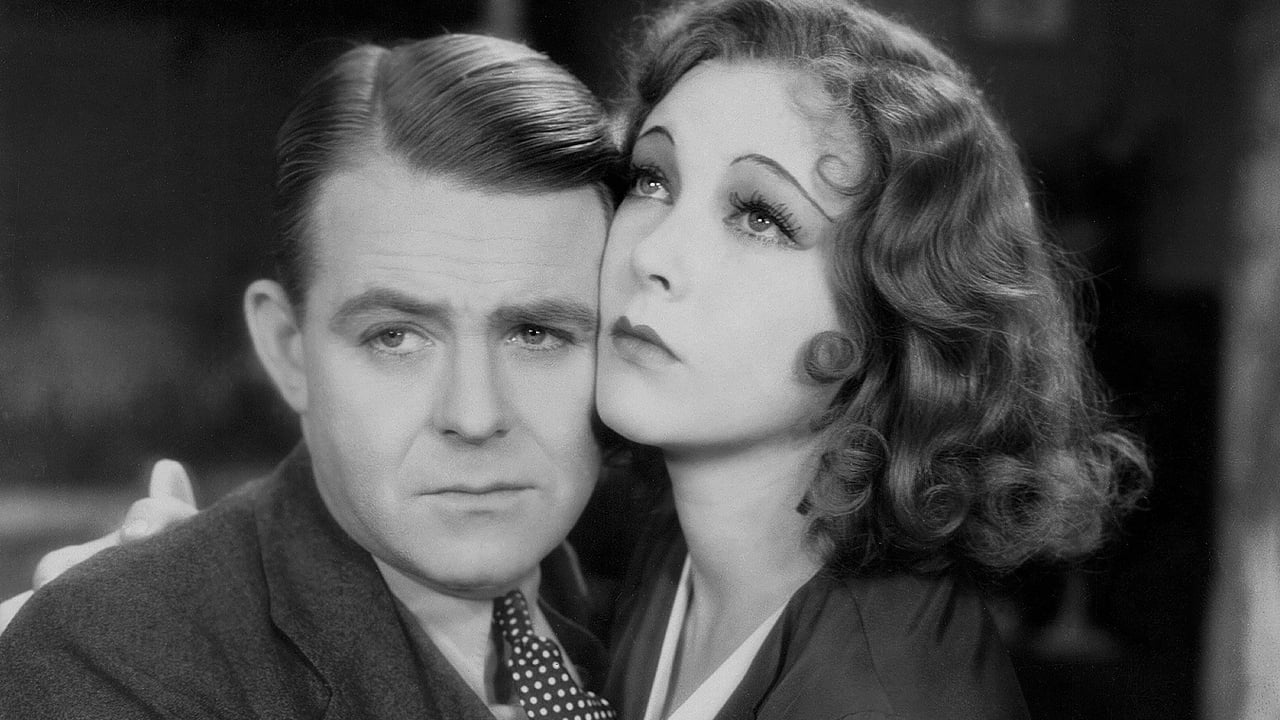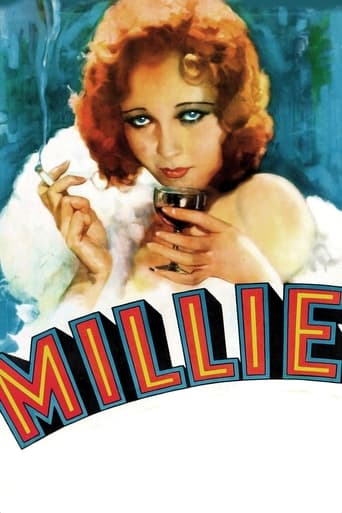

Slow pace in the most part of the movie.
... View MoreSave your money for something good and enjoyable
... View MoreAbsolutely Brilliant!
... View MoreIt's entirely possible that sending the audience out feeling lousy was intentional
... View MoreFun to see a young Joan Blondell. She and Frank Mc hugh would make TONS of great films over the next 20 years. The sound and picture quality are surprisingly good for such a seldom seen film. Sure, it ain't no Gone with the Wind, but they packed a lot of story into this early love triangle, or quadrilateral, as the case may be.Gal (Helen Twelvetrees is "Millie") falls in love, and keeps getting shafted by the men in her life. She is determined to be strong and independent, and protect herself and her daughter, Connie, played by Anita Louise. We see the daughter at the beginning, and again near the end, but she kind of disappears for most of the story. She and her two best friends get together and "help" each other whenever there is a crisis. Help is a relative term here... her two friends take a little too much delight in giving her bad news about her husbands and the guys who "done her wrong".Good fast moving script for the most part. Granted, there are a couple scenes that don't really need to be there (the "drunk" scene, where the two gal pals console each other, and a couple others.) Takes on some bigger issues, way ahead of its time, but watch it for yourself to see what I mean. I think they are showing all kinds of true life "things", if one reads between the lines, that weren't normally talked about in films. I'm really surprised at the lower rating of "6" as of today, but with only 211 votes, I guess it hasn't been seen much. Directed by John Dillon, who had started EARLY on in the silents. You can tell this was a relatively new talkie, since they use title cards here and there. Novel written by Donald Clarke, who also wrote "Female", another story of an early, independent woman, made into film.
... View MoreThis creaky antique reworking of Madame X is of interest mainly for its pre-code ingredients, blatant lesbianism, unpunished sex outside marriage etc., than any real value as a film. A lot of the film techniques are reminiscent of silents showing the growing pains of films continued into the early thirties. Part of the problem with the film is that all the men talk about how the heroine gets under a man's skin and they can't get over her but Helen Twelvetrees exudes none of the magnetism that makes that believable. The supporting players add more to the picture than the leads with Lilyan Tashman having the most fun as a party girl with Joan Blondell and Frank McHugh both starting out but already stealing scenes with their patented personas firmly in place. Except for the three of them the acting is extremely florid, especially towards the end. An almost unrecognizable Anita Louise, still beautiful but so young, is cast as Millie's daughter.
... View MoreI liked this film - I was looking forward to seeing this as Helen Twelvetrees was Queen of the betrayal movie, so I had read.I especially like Helen Twelvetrees and think there should be more of her films available. She had a really ethereal beauty and was really suited to playing sweet young innocents ie "Bad Company". In "Millie" she was never a "sweet young thing" being more of a "hot little number", judging by the young fellow's comments at the drug- store. Millie is already on her way to becoming Mrs. John Maitland as the film begins - 3 years later she is a bored young wife and mother, whose husband is having a fling with another woman. Millie accidentally finds out while lunching with gal pals (Lilyan Tashman and Joan Blondell - who even share the same bed!!!) John (James Hall) is more concerned with not causing a scene rather than comforting Millie. Unlike one of the other reviewers I did not like her husband - he didn't seem sorry for his actions. She then gets a job at a cigarette stand and in the years that follow, rises up in the business world to become manager of her own concession stand. I actually think the film is about Millie's emancipation from a rich business man's bored wife to being an independent young woman. When she first leaves her husband, her pals ask her how she is going to survive. Millie is determined to do it on her own and not ask her husband for anything. She also decides to leave her daughter with him because she would not be able to give her the things she need.After fending off men right, left and centre, she finally falls for Tommy Rock (Robert Ames) a reporter who wants to marry her. Millie is determined not to marry again but is quite happy to move in with him. He then treats her the same way as her husband treated her. I really wasn't expecting that - his personality being of the "awh shucks" type. At least he was sorry - sitting down and crying his eyes out when she leaves him (after she wrecks his apartment!!!) She then decides to be free and easy with her love - even offending Joan Blondell, who has since married a respectable businessman. John Halliday plays James Damier, Millie's boss, who has always been keen on her but as time goes on transfers his attentions to Millie's daughter Connie. She is played by Anita Louise, who looks about 15 and absolutely gorgeous. I won't reveal the ending but it is quite melodramatic.Look out for Carmelita Geraghty - I think she plays the young woman who tells Millie that Tommy has been cheating on her and can prove it. She was a lovely actress who was always under used in my opinion.Recommended.
... View MoreProlific director John Francis Dillon's 1931 "Millie" is a curiosity piece, a pastiche of poor editing and some sprightly acting vignettes.Millie, Helen Twelvetrees, starts off as a swept-off-her-feet kid eloping with handsome and ambitious Jack Maitland, James Hall. Her shaking virgin-wedding night-do we have to go to bed?- scene is very funny, one of the best of its kind on old film.Ensconced in Westchester County outside NYC, Jack makes big bucks and Millie, now three years on and with a little girl, is neglected, bored and angry at her absent husband. A reunion with two girlfriends at a cabaret brings an encounter with an errant Jack and his foul-mouthed paramour who gets a sock in the jaw from Millie.Divorced and working in New York City, Millie leads a socially active life with fast-track friends and wild parties. Reflecting the hesitancy of many directors and script writers at the time it's never really clear if Millie goes beyond gay partying to hop into the sack with rabidly panting, pursuing men, some already married.Millie has one true male admirer, a reporter named Tommy, played by Robert Ames. A drunken twit tells Millie he's fooling around with another woman and she believes her, ending the best relationship she's had. Tommy's a sad case.The story turns melodramatic when an older man-about-Manhattan, long obsessed with Millie, shows an unhealthy interest in her now gorgeous teenage daughter, Connie. The denouement is predictable but there's a nice trial scene to wrap things up."Millie" skirts on the border of dealing openly with adultery and promiscuousness. What is unusual is that the film has a clear sapphic subtext depicting Millie's two girlfriends as sexually involved - the first scene they're in shows them in bed in nightclothes. THAT was very unusual for the times. I wonder how many 1930s moviegoers picked up on that.Most of the cast isn't well known other than to aficionados of pre-war films. Joan Blondell, whose career was in the ascendancy, is young Angie, a flighty friend of Millie and probable lover of her other girlfriend.Better direction and editing would have improved a basically interesting story. It's a museum piece worth seeing if you care about how Hollywood portrayed extramarital flings, lechery, boozing and partying in the grand old Pre-Code Days.5/10.
... View More